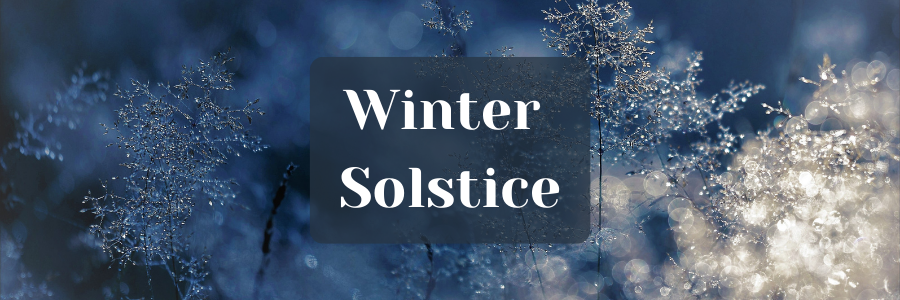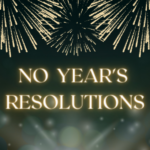December 21st is the winter solstice in the northern hemisphere. It is the counterpart and opposite of the June 21st summer solstice and brings us to the final part of the year – a reminder that the wheel keeps turning as we move from darkness towards the light, and once more look ahead to spring.
As it’s the day with the fewest hours of daylight, it’s the shortest day, and the longest night. It’s a time to be inspired by the long, quiet nights, and still landscapes, as we softly and quietly turn our focus inward. Humanity has in the past done what many animals do, retreating into cosy dwellings where they sustained themselves on foods harvested late in autumn.
For some people, winter is a joy-filled wonderland, for others it is cold, dark and depressing. Whatever your feelings towards winter, go easy on yourself, as it is a time when we’re often pulled in a lot of different directions. Remember that the stillness of winter invites us to rest and retreat.
For those of you who find the season tough, let the solstice serve as your reminder that the hardest part is done – from here on, the evenings are getting longer, and brighter days are on the way!
Solstice traditions
We think of the solstice as being a day-long event, but it is actually fleeting – it occurs at the moment that the hemisphere is tilted as far away from the sun as it can be. From there it starts to move back towards the sun. This marks the beginning of astronomical winter.
Since before recorded history, people have celebrated and held rituals around the Winter Solstice, and the ‘return to the light’.
Fire and light are recurring themes throughout the solstice celebrations, with Yule as one of the oldest winter festivals – a pre-christian celebration originating in Scandinavia. Yule traditions vary widely, but generally, it was to be expected there would be feasting, carolling and general merriment.
Yule was celebrated from the winter solstice through to January, with large logs (yule logs) being set aflame to sustain the warmth through the feasting and celebrations, and welcome back the light.
Saturnalia is perhaps one of the more well-known historical celebrations in western European history, as it shapes a lot of the way we celebrate Christmas today. It was a week-long festival in honour of the solstice. It featured games, feasting and gifts. Businesses and schooling stopped, and slaves were invited to join the festivities as guests.
“Saturnalia, held in mid-December, is an ancient Roman pagan festival honouring the agricultural god Saturn. Because of when the holiday occurred — near the winter solstice — Saturnalia celebrations are the source of many of the traditions we now associate with Christmas, such as wreaths, candles, feasting and gift-giving.” (1)
For the Zuni people, Native American peoples of New Mexico, the Winter Solstice marked the start of the New Year. Fasting, prayer and offerings would take place before the solstice, and then the ‘rebirth of the sun’ would mark the start of dancing, feasting and celebration.
Celebrate the solstice
To celebrate the solstice, and honour the season, here are some easy ways to bring some ritual and meaning to the days of December.
Get outside
Wrap up, and head outside to appreciate the beauty of winter. This time of year holds many unique and sensory experiences – there’s a meditative beauty in the patterns of frost and individuality of snowflakes. The temperature of the cold air in your lungs, and the muffled crunch underfoot, moving inside to warmth, to cups of tea, to moments by the fire… Sensory reminders that in stillness we can find clarity and connection.
Yule log
The yule log was traditionally a large log to be burned and feed the fires throughout the celebrations. It was also thought to encourage the light to return. In anticipation of brighter days, you could make a yule log to hold candles as a table centrepiece, find a log to (safely) go on the fire… or go for the edible yule log still widely eaten today.
Bring the outside in
Create an altar, or decorate your practice/living space with signs of winter – pinecones, berries, holly etc – and make this a focal point for your yoga practice.
Set intentions
Light a candle to symbolise our own inner light. Create potent ‘I am’ intentions to help you visualise where you want to be. Light shines brightest in the darkness, so this is your time to shine and set powerful intentions for the season ahead.
Gratitude
Practice gratitude for the abundance that the earth brings into our life. Make notes in your journal, or just take a quiet moment to meditate on the things you are grateful for.
Move your body
Roll out your mat, and dedicate your practice to nourishing your inner spirit and restore depleted energies and radiate that light outward to sustain us in darker days.
Feast
A recurring theme through solstice celebrations, from Saturnalia, to Yule, to Christmas, a good dinner is always on the table. Choose fresh, colourful, locally-available (where possible) seasonal food. Great for your body, and for the planet. (Let’s also acknowledge that this is sometimes a tricky thing, so look for what’s achievable and affordable in your area and budget.)
Catch a sunset (or moonrise)
The early sunsets and crisp nights make for many beautiful opportunities to see the sun set and the moon rise… and marvel at the natural beauty of each day.
1 https://www.history.com/topics/ancient-rome/saturnalia






